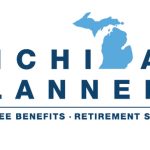
Looking For Extraordinary People To Join Our Team
January 13, 2020
Ready To Write A New Chapter
February 14, 2020Health Savings Accounts and GAP Plans DO NOT Mix!
Recently a client of ours was approached by a competing broker who came up with, what they believed to be, an excellent plan to help reduce the client’s spend. They proposed a High Deductible Health Plan where, on its own, was a qualifying plan allowing for a Health Savings Account to be established for participating members. Members would then be able to contribute pre-tax dollars into their HSA plan and reduce their taxable income while helping save for future medical expenses. This is arguably the best advantage to qualifying HDHP Plans.
Everything sounded great until the advisor proposed a GAP plan to pair alongside the HDHP. The GAP plan would cover major medical expenses up to the HDHP plan’s deductible, thus, eliminating much of the risk to the employees. Employees would then be able to take advantage by contributing to their HSA, and the employer wins by reducing costs. Brilliant right? Unfortunately, not.
The IRS is clear in the regulations stating that for participants to be able to contribute to an HSA they must be enrolled in a qualified HDHP plan and have no other medical coverage. Listening to this strategy would put the group and employees in a situation where HSA contributions would have to be reported as taxable income and be paid with an additional 6% excise tax.
A great and compatible strategy with HSAs is to review policies, such as accident, critical illness and hospital indemnity plans to offer alongside. These plans can be offered as employer-paid or voluntary and help to offset typical medical expenses associated with incurring high medical claims.
Please feel free to contact Matt Cole with comments and/or questions related to this topic.
